Teach, Learn, Serve
Students Spend Spring Break in the Philippines
by Melissa Hutsell
JUST OUTSIDE THE BUSTLING CENTER of Cebu City lies a village called Sudlon, an agricultural region embedded with farms and ranches. Here, 11 students from Humboldt and 250 students from Sudlon National High School came together during the Spring semester to exchange cultures and learn new skills from each other as part of the University’s newest International Service Learning program.
International Service Learning programs are a subset of Service Learning programs, which are collaborations between students, community partners, and faculty. The programs connect coursework with service to address community-defined needs for course credit, according to the University’s Center for Community Based Learning.
International Service Learning programs offer the opportunity to do that abroad while learning how to be better global citizens. Programs span disciplines ranging from translation services to art education. Some majors—including Child Development, Sociology, and Criminology & Justice Studies—require students to take a Service Learning course.
Throughout the 2022-23 school year alone, 317 Humboldt students from 21 Service Learning courses conducted 6,855 hours of service, according to the Center. The longest-running programs are through the University’s Youth Educational Services (Y.E.S.). Past International Service Learning programs have occurred in Mexico and the Dominican Republic. Future programs include Oaxaca, Mexico, and León, Spain.
While there are eight core elements that define these opportunities, reciprocity and reflection are at their heart. For example, both students and community members find value in these experiences, and grow from them.
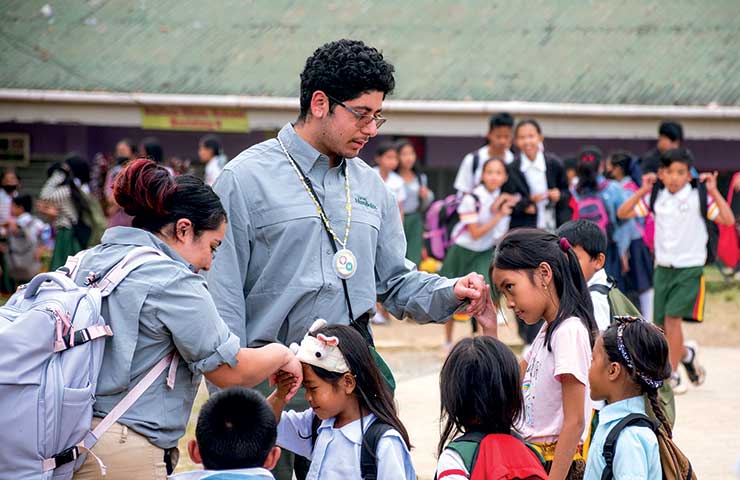
Students from the nearby elementary school greet Humboldt guests using a traditional “mano” gesture as a sign of honor and respect.
"A day in Cebu is a rich and immersive experience offering plenty of opportunities for learning and growth. It was a beautiful experience that I think everyone should have while they’re here at Cal Poly Humboldt."
Jason Arcilla, Kinesiology major
Stacy Becker, the Center’s community partner organizer, says these experiences are where academic learning hits reality. “Students are able to make connections between curriculum and real-world practices; they can test the waters to see if professions are their true career paths; they network with community organizational players and build foundations for resume building and next steps after college.”
For faculty, “Service Learning pedagogy adds depth, excitement, and effectiveness to course learning objectives and the all-around educational experience,” she says. “For community partners, these are important ways to build future employees and stakeholders.”
In an effort to provide hands-on experience while also enhancing cultural awareness, civic engagement, and interdisciplinary learning, students and faculty took these Service Learning objectives abroad to Cebu. To prepare for the trip, students enrolled in a course where they developed workshops on topics of interest to Sudlon National High School students and staff. They also learned about the culture and history of Cebu.
During the one-week trip, students conducted workshops and participated in cultural excursions to historical landmarks, markets, and factories. The trip is especially valuable to students who may not otherwise be able to afford longer programs.
“The nature of Service Learning programs allows students and communities to work together as part of an academic curriculum. Throughout the program, students learned about Filipino culture, but also about themselves through individual and group reflection.”
Matthew Dean, World Languages & Cultures department chair
Once in Cebu, students delivered two workshops each—one cultural exchange and one focused on academic or personal growth. The latter focused on skill development through topics including photography, public speaking, and goal-setting. Cultural exchanges, like the culinary workshop, presented aspects of both American and Filipino culture, explains Matthew Dean, World Languages & Cultures department chair and faculty lead on the trip. Other topics included: sustainability and environment, music and dance, and pop culture through comics. In addition to these workshops, Humboldt students also participated in cultural excursions. Those included visits to Basilica del Santo Niño, Magellan’s Cross, Mactan Shrine, Cebu Taoist Temple, Yap-San Diego Ancestral House, and Heritage of Cebu Monument.
The trip, partially funded by Associated Students, was student Matthew Gerber’s first outside the United States.
Gerber, a Recreation Administration major, says the program allowed him to exercise skills developed in his coursework: leadership, public speaking, environmental education, arts, culture, and social work. It also gave him the opportunity to channel his passions and academic backgrounds.
As a photographer and foodie, his workshops focused on photography and cuisine. The culinary exchange workshop highlighted similarities between American food (particularly Humboldt County agriculture) and Filipino food. Sudlon students developed recipes that showcased their favorite homestyle Filipino foods, or blended Filipino and American cuisine. A favorite of his was “Kinilaw,” a Filipino ceviche made with Chinook salmon.
During the photography workshops, Sudlon students took more than 1,500 photos, and exchanged new techniques with Humboldt students.
Jazea Smith, a Fisheries Biology major, helped create a climate-focused workshop where students shared their personal experience with worsening climate events. For example, Super Typhoon Odette hit the Philippines in December 2021. Millions were affected and displaced, according to the United Nations. The category five storm killed hundreds, and destroyed the homes and crops of many students in the workshops—many are still rebuilding.
Their resiliency inspired her. “My biggest takeaway from this workshop was how passionate, vulnerable, and outspoken many of the students were in talking about becoming climate activists, and also truly how similar we all were in often feeling hopeless and afraid about the state of the world,” she says.
Smith says she has never had such a period of accelerated learning in her life. “Every day prompted new and insightful conversations.”
The experience also left students feeling “a greater appreciation for the beauty that can be found in our differences,” according to one Sudlon student.
“From the moment you arrived, we could feel your energy and enthusiasm,” another Sudlon student explains in a handwritten letter. “Your eagerness to explore and discover everything this place had to offer was contagious. We watched as you embraced us with open arms, soaking up the sights, sounds, and sensations of this beautiful place.”
Throughout the visit, the high schoolers treated Humboldt guests to several performances of cultural songs and dances, including “Tinikling” and “Maglalatik”. Some played traditional schoolyard games with Sudlon students, including “Patintero,” while others faced off at the neighborhood basketball court.
The closing ceremony, which featured traditional dance performances from Filipino students—and an impromptu performance from Humboldt students—was one of the most memorable parts of the trip for Dean. “There were probably a thousand people or more there,” he reflects. “The ceremony was a celebration of our newly established connection and the impact of our student’s work.”
It’s difficult to describe the truly magical connection that was created during the service days, says Dean. “Humboldt students demonstrated cultural awareness, understood Service Learning principles, and learned about social responsibility through personal and collective shared reflection.”
“The nature of Service Learning programs allows students and communities to work together as part of an academic curriculum. Throughout the program, students learned about Filipino culture, but also about themselves through individual and group reflection,” says Dean.
The reciprocal nature of Service Learning programs was evident for Jason Arcilla, a Kinesiology major.
“My classmates and I learned so much from the students at Sudlon High School,” Arcilla says. In his goal-setting workshop, students enhanced their clarity and focus skills by setting specific, measurable, achievable, relevant, and time-bound (SMART) goals. In return, he developed skills in adaptability and resilience as he navigated new environments and cultural norms.
Arcilla was drawn to the program for the hands-on experience and the ability to serve local communities while also learning about his own heritage. “I’m Filipino and I miss Filipino cuisine and recipes that I don’t find here in Humboldt,” he says. “This trip provided me with an opportunity to learn more about Filipino culture and history, while also developing communication, leadership, and problem-solving skills.”
“A day in Cebu is a rich and immersive experience offering plenty of opportunities for learning and growth,” Arcilla says.
While it was his first experience with International Service Learning, he says it won’t be his last. “It was a beautiful experience that I think everyone should have while they’re here at Cal Poly Humboldt.”
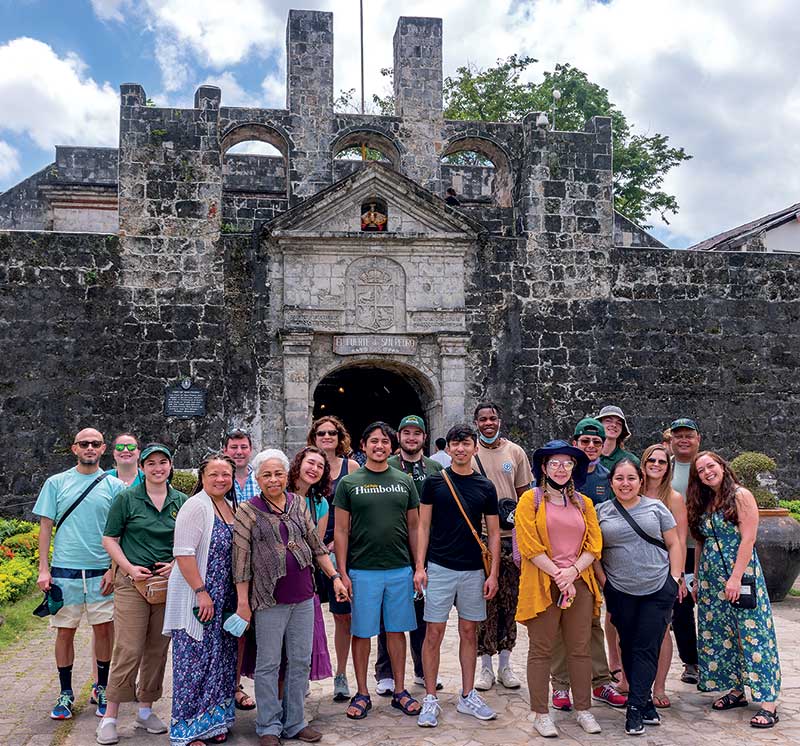
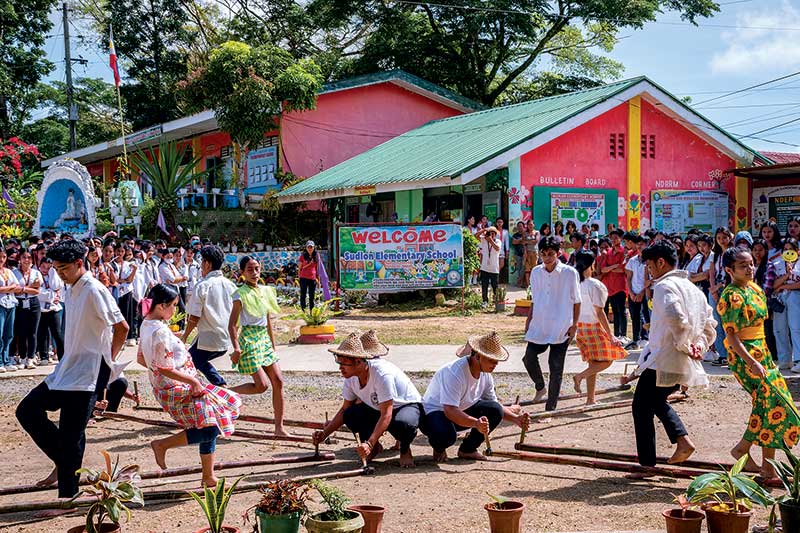
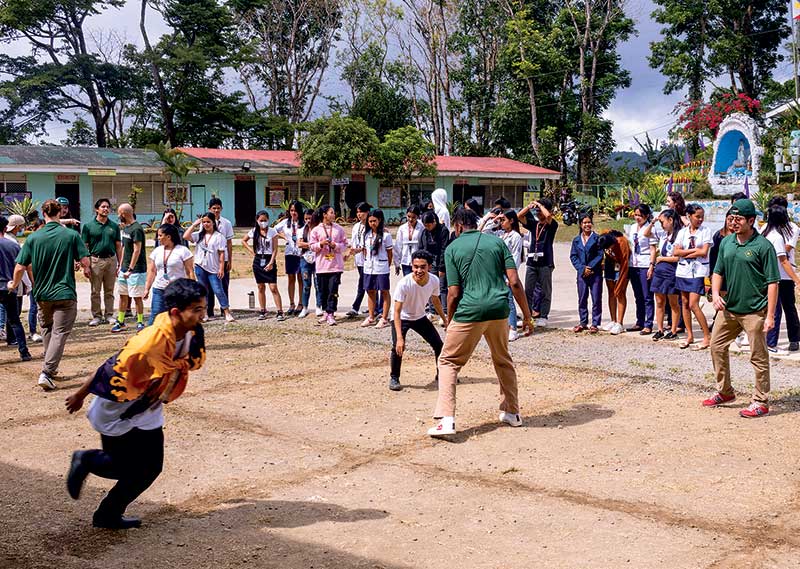
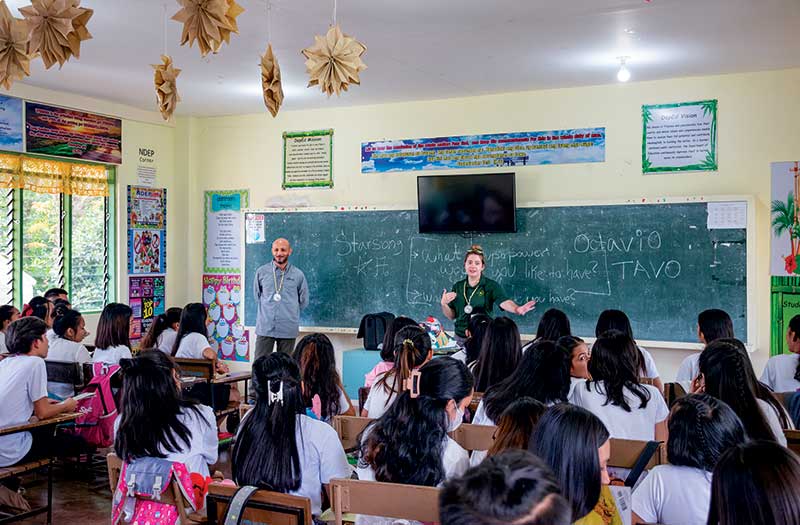
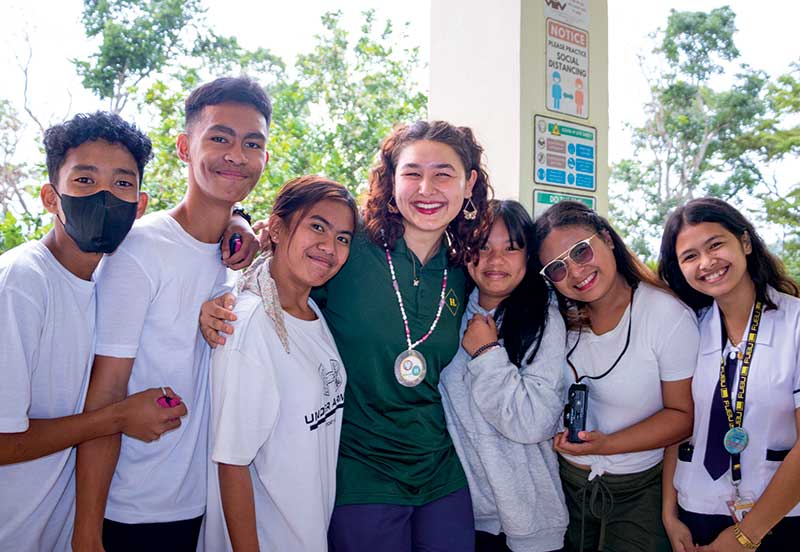
(TOP LEFT) Humboldt students—pictured here at El Fuerte de San Pedro (Fort San Pedro)—learned about Cebu’s culture, formed from the influence of Spain, Japan, the U.S., and Indigenous practices.(TOP RIGHT) Filipino students performed cultural songs and dances, including “Tinikling” and “Maglalatik.” (MIDDLE LEFT) Some students played traditional schoolyard games with Sudlon students, including “Patintero.” (MIDDLE RIGHT) The cultural exchange workshops focused on similarities between American and Filipino culture, while academic/personal growth workshops focused on developing and practicing a skill. (BOTTOM RIGHT) Humboldt and Sudlon students connected with and learned from each other, and built memories to last a lifetime.
(TOP) Humboldt students—pictured here at El Fuerte de San Pedro (Fort San Pedro)—learned about Cebu’s culture, formed from the influence of Spain, Japan, the U.S., and Indigenous practices.(SECOND) Filipino students performed cultural songs and dances, including “Tinikling” and “Maglalatik.” (THIRD) Some students played traditional schoolyard games with Sudlon students, including “Patintero.” (FOURTH) The cultural exchange workshops focused on similarities between American and Filipino culture, while academic/personal growth workshops focused on developing and practicing a skill. (FIFTH) Humboldt and Sudlon students connected with and learned from each other, and built memories to last a lifetime.